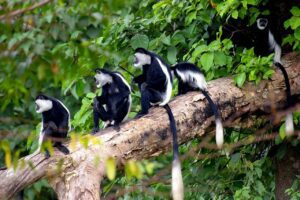
Rwanda Tours: East of Africa’s continent is home to the landlocked nation of Rwanda. Uganda, Tanzania, Burundi, and the Democratic Republic of the Congo are its neighbors. Although being a small country, Rwanda has managed to draw tourists by utilizing her history, people, expanding economy, and tourism resources. Over 1,000,000 people were killed in a matter of weeks, making it one of the deadliest genocides in modern memory.
Although horrible, the holocaust was humbling. The genocide later assisted in bringing the populace together for the benefit of the country rather than dividing it. One of the safest places to travel in Africa right now is Rwanda. Because of their strong sense of nationalism and cooperation in rebuilding their country, Rwandans have inspired envy around the world.
Tourism has a significant role in Rwanda’s economy. As a result, the government has made every effort to establish the nation as one of the top tourist destinations in Africa. The Rwanda Development Board has aggressively advertised the nation abroad and updated the nation’s tourism infrastructure.
What should travelers expect from Rwanda? When compared to other African nations, Rwanda has exceptional natural beauty thanks to its more than 1,000 hills and five volcanoes. Although her neighbors would disagree, Rwanda also takes pleasure in having some of the most attractive individuals in Africa.
Despite its natural beauty, Rwanda is home to a third of the world’s mountain gorilla population. The Volcanoes National Park of Rwanda is home to these magnificent apes. Almost 100,000 tourists come to the nation every year solely to view mountain gorillas. Rwanda is a good place to go on a gorilla safari because it is quicker to travel to the tracking location.
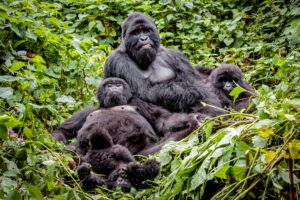
In addition to the Volcanoes National Park, other national parks that offer tourism-related activities include Nyungwe Forest (where visitors may go chimpanzee trekking, take nature and canopy walks, and see the big five), Akagera, and Gishwati-Mukura (small primates, nature walks and birding).
In addition to the national parks, a Rwanda safari can also take you to the city of Kigali for a cultural and historical excursion. After touring the national parks, visitors can unwind, go swimming, and have picnics at the magnificent Lake Kivu.
In general, the popular tourism activities while on a Rwanda safari include: –
Gorilla tracking in the Volcanoes National Park.
Chimpanzee tracking in Nyungwe National Park.
The Kigali city tour is also very popular and includes visiting the main genocide memorial centre, the city markets, artisan shops and the former presidential palace.
Game viewing in Akagera national park.
Birdwatching in the four national parks.
Genocide memorial tours in other towns other than Kigali.
Visiting the Gorilla Guardians village for an amazing introduction to the Rwandan culture.
A tour of the Dian Fossey tomb and former Karisoke Research Centre.
Cycling along the Congo Nile Trail.
Hiking one of the 5 Virunga volcanoes (Karisimbi, Bisoke, Muhabura, Gahinga and Sabyinyo).
Swimming, relaxing and sunbathing from lake Kivu.
Boat cruises in Lake Kivu and other water bodies.
Rwanda Tours – Places to visit on a Rwanda safari
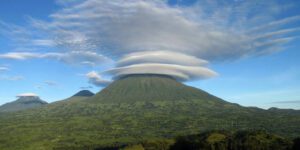
Volcanoes national Park: This was Rwanda’s first national park to be created. It belonged to the vast Congolese Virunga National Park. The country’s northeast is where the park is located. One of the last remaining habitats for the critically endangered mountain gorilla is the Volcanoes National Park. It is one of the few locations where visitors can engage in gorilla interactions in the wild.
From 1965 and 1986, the renowned primatologist Dian Fossey conducted the majority of her research and conservation efforts in the park. She assisted in bringing more people to the park, and her influence endures today. Between Mount Bisoke and Karisimbi, her grave and the former Karisoke Research Center are still visited by tourists.
In addition to gorillas, the Volcanoes National Park is also home to smaller primates, birds, forest elephants, buffalo, enormous forest hogs, hyenas, and serval cats. In addition to hiking one of the park’s mountains, particularly Bisoke and Karisimbi, visitors can track for golden monkeys, another favorite activity.
Nyungwe Forest National Park:
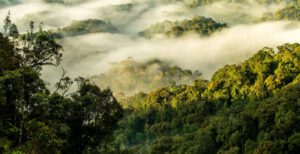
One of Africa’s oldest tropical rain forests is the Nyungwe forest. It is an excellent habitat for primates due to its tall trees and thick foliage cover. In Nyungwe forest, there are 13 different types of primates, although chimpanzees are the most popular among tourists.
You can go chimpanzee tracking in Nyungwe Forest and travel deep into the woods to see what is thought to be the closest living relative of humans. Tourists can see 12 different species of monkeys on chimpanzee tracking or nature walks, including vevert monkeys, pottos, olive baboons, red-tailed monkeys, Angola Colobus, and black and white colobus monkeys, among others.
Visitors can partake in one of the best canopy walk experiences in Africa thanks to the park’s tall trees. The Canopy walk trail is 50 meters off the ground enabling visitors to get an aerial view of the park and its creatures.
Akagera National Park: Comparing Akagera to Rwanda’s other three national parks, there are some differences. The Big Five (lions, elephants, leopards, buffaloes, and rhinoceroses) as well as giraffes, zebras, elands, and warthogs may all be seen in this park, which is the only one of its kind in Rwanda. Grasslands from the savannah, forests, wetlands, and lakes make up the majority of the park.
Although there are other bodies of water in the park, such as lakes Ihema and Shakani, the river Akagera gives the park its name. After seeing the wildlife, visitors can take a boat tour on Lake Ihema to see birds, crocodiles, and other aquatic creatures. About two hours pass throughout the boat ride. Akagera also offers bird watching, sport fishing, and natural walks.
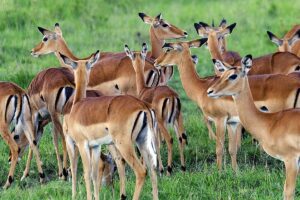
Gishwati-mukura National Park: This is the newest national park in Rwanda. In 2013, it was created by joining Gishwati and Mukura national parks. The government is consequently attempting to diversify its tourist attractions by creating Gishwati-Mukura National Park. Primates such chimpanzees, red-tailed and blue monkeys, debrazzas, mangabeys, golden monkeys, and more can be seen in the park. This national park is home to a number of endemic bird species. Before making it completely accessible to the public, the government intends to promote it as a primates and birding destination.
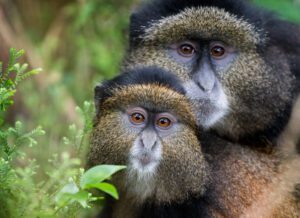
Rwanda Safaris – Other locations to take into account while when on a Rwanda wildlife safari Memorials to the Genocide: Two heinous genocides took place in Rwanda. Although the one in 1994 is notable, there was another, less well-known incident in the 1960s. Thousands of people were slaughtered in both instances, and many more were exiled or sent to live in refugee camps.
The government has constructed various genocide Rwanda wildlife safaris across the nation to make sure that such a thing never occurs again. These institutions serve as educational resources concerning the genocides as well as warnings to future generations about the dangers of promoting prejudice, segregation, and other tribal emotions.

The killings that occurred, particularly during the 1994 genocide, are documented at the memorial sites for genocide. Images of the victims, as well as the instruments used to take people’s lives and mass graves, are visible. There are other documentaries that explain the causes of the genocides and their effects. Any of the facilities can be visited for educational purposes and to honor individuals who have passed away. The memorial center for the Rwandan genocide, Nyamata Church, the site of the Murambi genocide, the Nyanza genocide Center, and Ntarama are among the centers.
The Congo Nile trail: This is an illustration of the nation’s efforts to diversify its tourism offers. One of the best bicycling and cycling trails in all of East Africa is the 227-kilometer-long Congo Nile Trail. In addition to utilizing a motorcycle or walking, travelers have the option of completing the trail. The Congo Nile route offers travelers the chance to explore the Rwandan countryside and get a glimpse of daily life there.
The Trail, which starts in Gisenyi and ends in the region of Ruzizi, runs along the shores of Lake Kivu. Those who complete the trek will get to take in Rwanda’s lovely rolling hills, see primates in the Nyungwe forest, talk to locals, and experience what it’s like to live in a poor nation.
Lake Kivu: The biggest body of water in Rwanda is Lake Kivu. It is a vital part of the tourism industry and a trade route to the Democratic Republic of the Congo. Western Africa is where Lake Kivu is located. The lake extends all the way to the Democratic Republic of the Congo, facilitating trade between the two nations. Moreover, Lake Kivu includes a network of fishing communities that provide jobs for citizens of the two nations.
What can travelers expect from Lake Kivu? Visitors can go swimming, relax on the beaches, take boat trips, hop from one island to another, or visit fishing communities to meet the locals. The majority of tourists unwind in Lake Kivu before or after visiting Rwanda’s national parks.
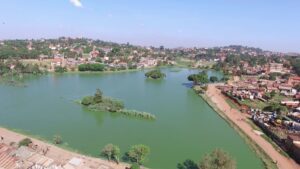
The Virunga Volcanoes: There are 8 volcanoes in the Virunga region, 5 of which are in Rwanda. Karisimbi, Bisoke, Muhabura, Gahinga, and Sabyinyo are among them. Karisimbi and Bisoke are the mountains that people like to hike the most.
Karisimbi can be taken down in two days, but Bisoke can be done in just one. Visitors who climb either of the two volcanoes are rewarded with stunning views of the Ugandan national parks of Mgahinga and Bwindi as well as the other Virunga mountains and the Virunga National Park.

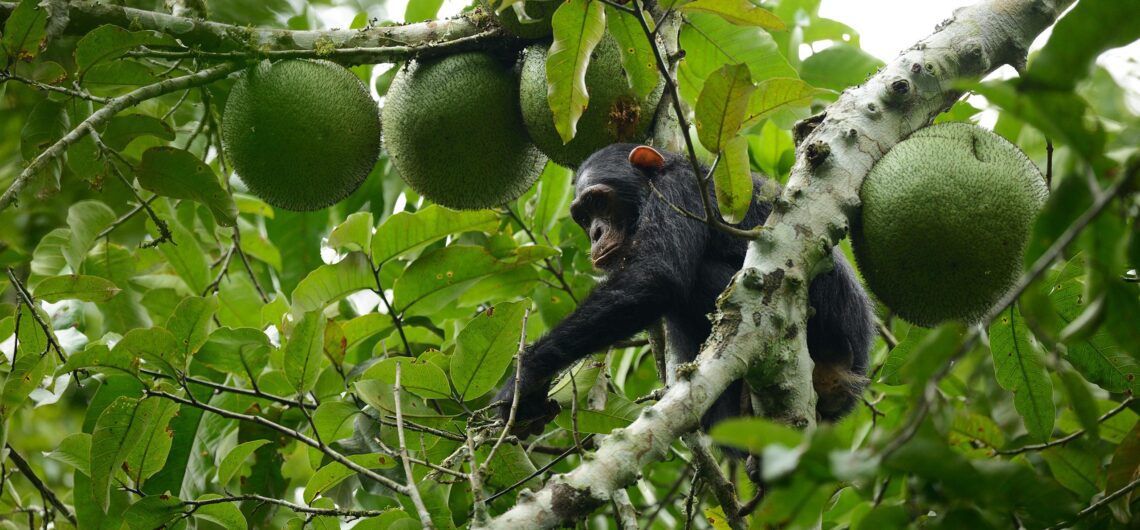
Comments